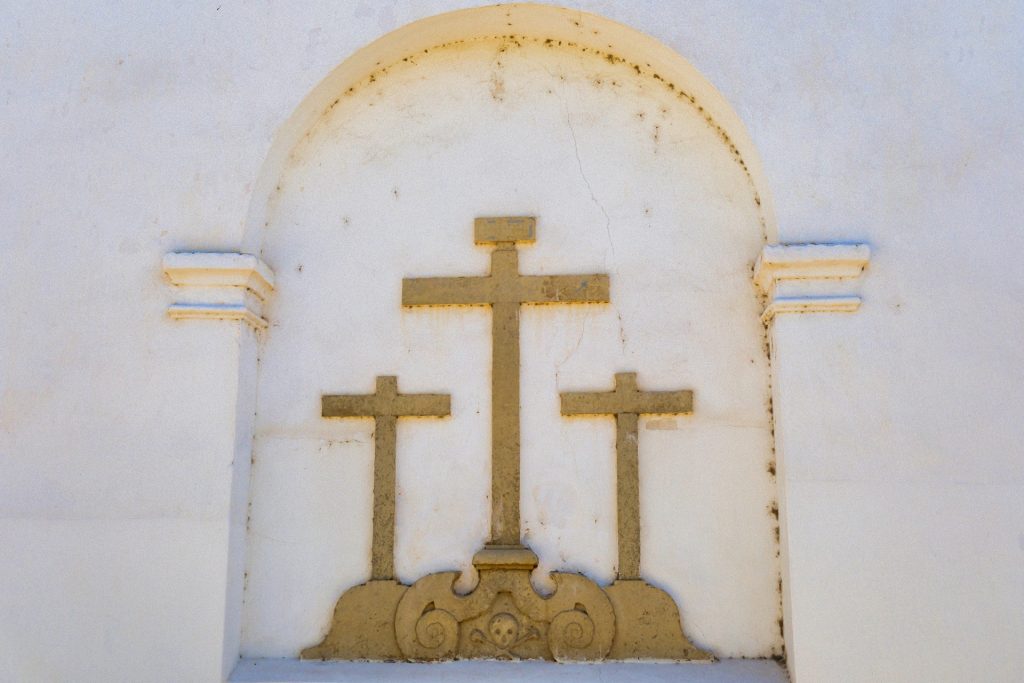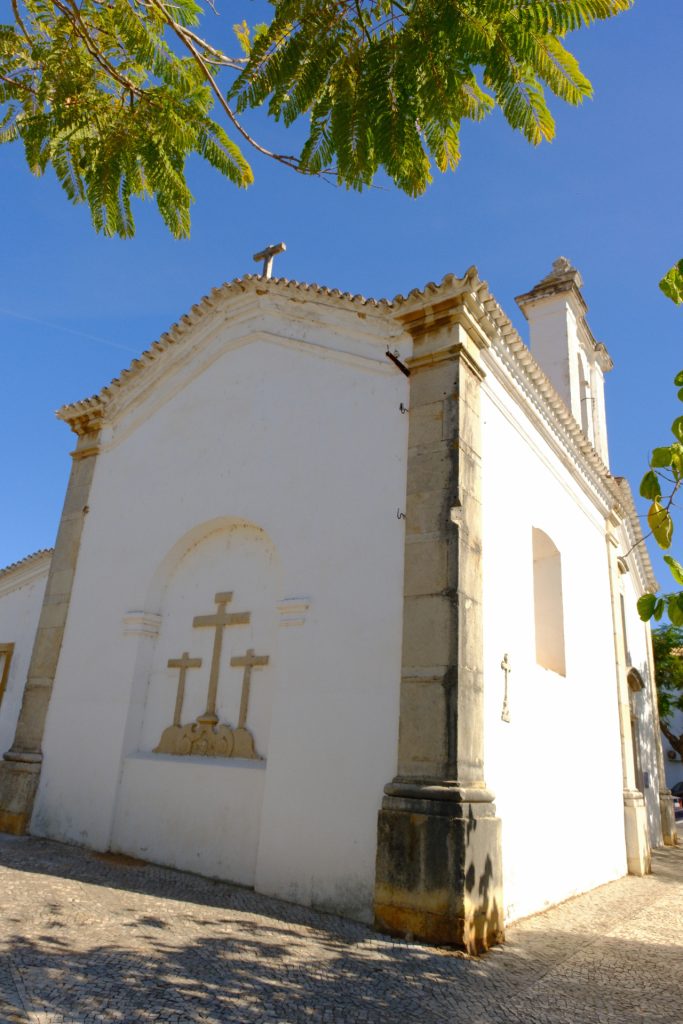The Ermida de São Sebastião is one of Faro’s oldest surviving religious buildings and a quiet landmark that often escapes the attention of visitors. Located just outside the historical core, this small church holds centuries of history, devotion, epidemics, artistic heritage and, in recent years, an unexpected new life as the Romanian Orthodox Church of Faro. Its long story reflects both the evolution of Faro and the multicultural character of the Algarve today.
History of the Chapel
The origins of the Ermida de São Sebastião likely date back to the late medieval or early modern period, when chapels dedicated to Saint Sebastian were built across Portugal as a form of protection against the plague. Saint Sebastian, a popular plague saint, was invoked during epidemics, and many towns constructed similar hermitages on their outskirts. Faro followed this tradition, and the church served both as a spiritual refuge and a reminder of the fragility of life in a disease-ridden era.

While the exact construction date is not fully documented, historians generally place the chapel in the 16th or early 17th century. It is one of the few pre-1755 buildings in Faro that survived the great Lisbon earthquake, which caused destruction throughout the Algarve. Modest but solidly built, the chapel stood through periods of crisis, reconstruction and social change.
Architectural Description
The Ermida de São Sebastião is a small whitewashed building typical of Southern Portugal’s religious architecture. Despite its size, it displays elegant proportions and a simple but harmonious design. The façade features a plain portal, small windows and a triangular gable, giving it a serene presence. The chapel’s modest bell is placed on a small belfry, a detail shared with many rural hermitages in the Algarve.
Inside, the chapel originally held an altar dedicated to Saint Sebastian, often depicted tied to a tree and pierced with arrows. The interior would have been decorated with modest devotional art, reflecting the community-based role of the building. Although original decorations do not survive fully intact, the structure retains its authentic atmosphere.
Transformation into a Romanian Orthodox Church
In recent years, the building entered a new chapter when it became home to the Romanian Orthodox Church in Faro, serving the local Romanian community. This transformation reflects the demographic changes in the Algarve, where migrant communities have revitalized old structures and added new layers of cultural meaning. Today, the hermitage is still architecturally Portuguese, but its spiritual life follows the traditions of Eastern Orthodoxy.

The Romanian Orthodox community has adapted the interior to their liturgical needs, adding icons, Orthodox furnishings and religious elements consistent with their rites. The result is a unique blend of Portuguese heritage and Romanian Orthodox spirituality, making it one of the most unusual religious spaces in Faro.
Cultural Significance
The Ermida de São Sebastião now represents more than a historic monument. It stands as a symbol of continuity, resilience and cultural coexistence. The building, once intended to protect the local population from the plague, now protects a different kind of community: people far from home who maintain their traditions while integrating into Portuguese life.
Its survival through centuries of earthquakes, epidemics and social changes makes it one of Faro’s quiet cultural treasures. While it lacks the grandeur of major churches, its charm lies in its intimacy and historical depth.
Visiting the Chapel Today
The building is located in a calm residential area of Faro, away from tourist crowds. It is best appreciated from the outside unless you visit during Orthodox services, which are typically held on weekends or religious feast days. Because it is now an active place of worship, access inside may vary depending on community activities, but visitors are generally welcome to admire the chapel respectfully although the building is seldom open.

The exterior remains very photogenic, maintaining its traditional Algarvian simplicity. The contrast between the whitewashed walls and the blue Portuguese sky makes it an excellent stop for travelers interested in heritage, architecture and lesser-known corners of Faro.
Why the Ermida de São Sebastião Matters
The chapel is significant not only for its historical value but also for its role in today’s multicultural Faro. It illustrates how old buildings can gain new meaning while preserving their identity. Its transformation into a Romanian Orthodox church enriches Faro’s religious landscape and gives the structure a renewed purpose.
For those who enjoy discovering authentic, overlooked places, the Ermida de São Sebastião is a rewarding stop. It tells a story that spans plagues, earthquakes, faith, migration and cultural adaptation — all concentrated within a modest white chapel.
Further Information
More information, including historical and architectural details, can be found in the Portuguese article on Wikipedia. You can always use Google Translate or similar.
If you are interested in religious architecture you can find here the list of our articles about these buildings in Faro.




